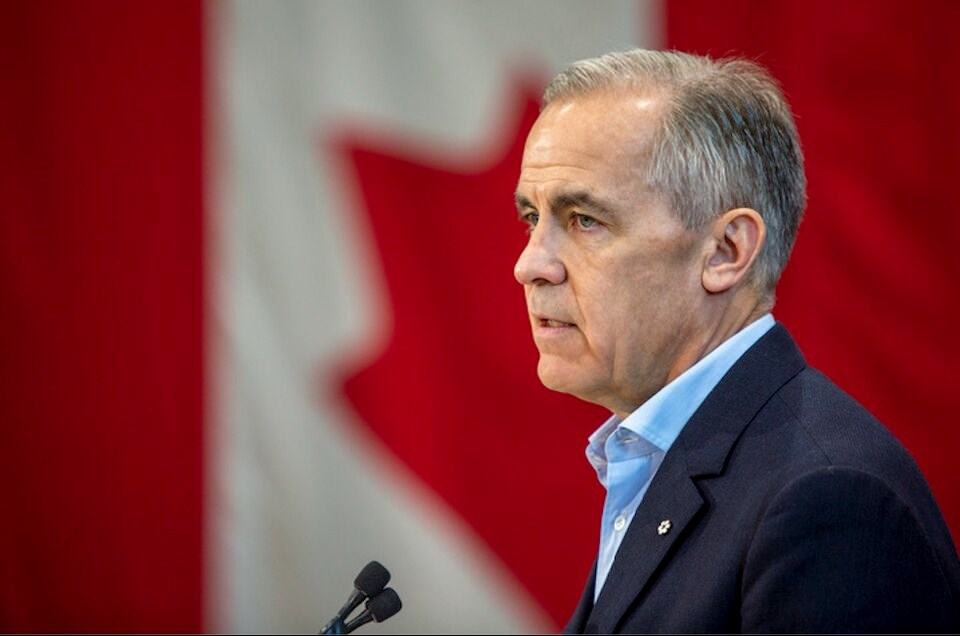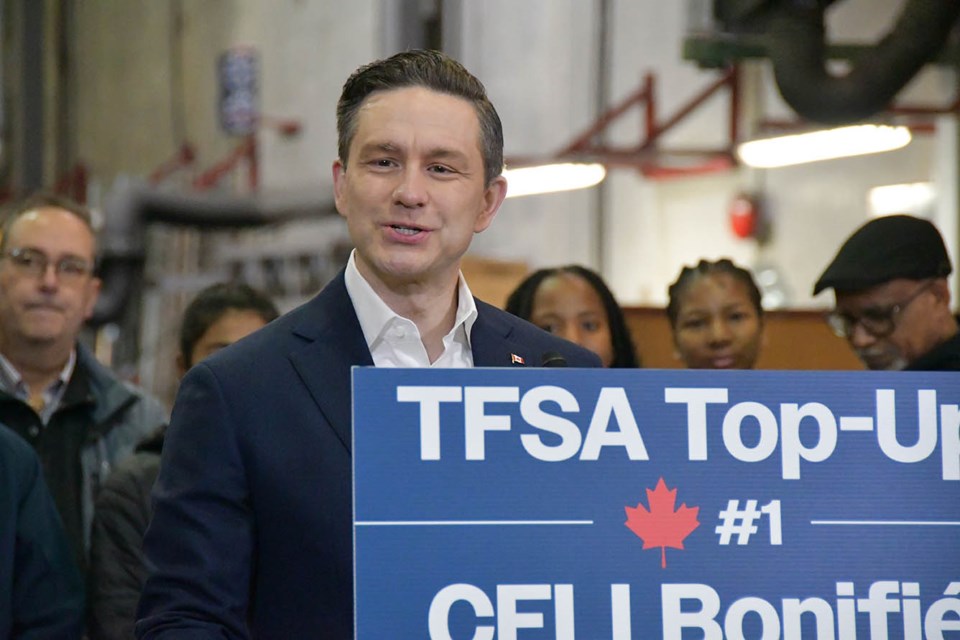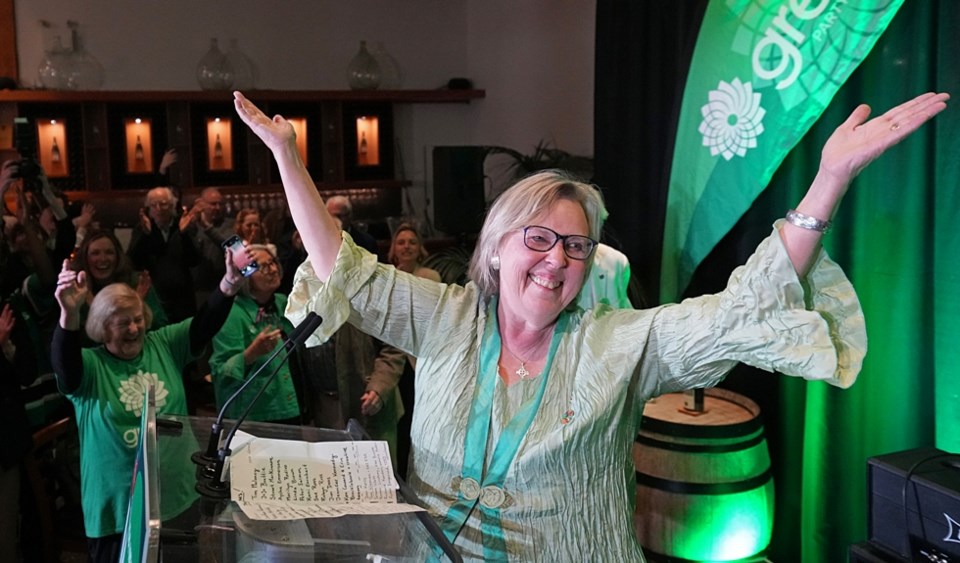Canadians have elected a Liberal government in a rapid reversal of fortunes that sunk Conservative hopes to lead the country, and will soon leave the NDP without a leader and shy of the seats needed to form official party status.
The Canadian Press forecasted a Liberal victory at just before 7:15 p.m. PT Monday after the Liberal Party won enough seats through Atlantic Canada, Quebec and Ontario to form a government.
But as the night progressed, Mark Carney’s Liberals failed to pick up enough seats to form a majority.
Liberal Leader Mark Carney was re-elected in his Ottawa riding, one of 167 ridings—five shy of a majority government—held by the Liberals as of 11 p.m.
“I intend to work for all Canadians,” he told a crowd of supporters. “Let’s put an end to the division and anger of the past.”
In B.C., NDP Leader Jagmeet Singh said he planned to resign his post after losing his seat in Burnaby Central in a devastating defeat to Liberal challenger Wade Chang.
“We had really good candidates who lost tonight,” he said. “It’s tough. But we are only defeated if we stop fighting.”
Singh fought back tears in front of a crowd of supporters at a hotel in the city’s Metrotown neighbourhood. One of those in the crowd was David Reid, an NDP organizer for the riding.
“I’m scared,” said Reid. “We don’t want our leader to lose his seat.”
After his defeat of Singh, Chang said he would work hard to bring housing to his newly won riding while working to support small- and medium-sized businesses. Chang said his campaign worked every day knocking on doors to defeat the NDP incumbent.
“I’m surprised but not surprised,” he said of his victory. “I am surprised that my team and I made the impossible possible.”

Much of the election campaign centred on who could best fend off attacks from the current U.S. administration — from a burgeoning trade war to U.S. President Donald Trump's threats to Canadian sovereignty.
An economist who previously led central banks in Canada and the United Kingdom, Carney positioned himself as a steady hand that could guide Canada through crisis.
At first, public opinion polls showed the approach appeared to resonate with voters, and early momentum swung in the Liberal’s favour.
But as the election neared, the Conservative campaign under Pierre Poilievre managed to close the gap and stem some of the worst predictions of a Carney-Liberal tide sweeping across the country.

The party gained on the 119 seats it won in the 2021 election and saw its best performance in the popular vote since Brian Mulroney led the Conservatives to a 43 per cent vote share in 1988.
"It takes time. It takes work, and that's why we have to learn the lessons of tonight so that we can have an even better result the next time the Canadians decide the future," Poilievre told a crowd at a convention hall in the nation's capital.
It's not clear if that future will include the Conservative leader. Late Monday, Poilievre remained in a tight race for his political survival with Liberal challenger Bruce Fanjoy in the lead in his Carleton, Ont., riding.
Richard Johnston, a University of British Columbia professor emeritus of political science, said that across Canada, the polls seriously understated the Conservative and Bloc Québécois share of the vote, with both parties standing in the way of a Liberal majority.
“If the results stay as they are, meaning anything less than 172 [ridings for the Liberals], then the NDP at the moment hold the balance of power," said Johnston.
“Not comfortably, but they do.”
In B.C., NDP bleed support to Liberals and Conservatives
Carney and Poilievre paid multiple visits to British Columbia throughout the campaign, courting voters of all stripes and attempting to peel away NDP incumbent ridings.
In Kelowna, Conservative incumbent Tracy Gray remained in a dead heat with former Liberal MP Stephen Fuhr — the latter holding a slim 170-vote lead as of 12:29 p.m.
The Conservative push, meanwhile, appeared to pay off in several Metro Â鶹´«Ã½Ó³»ridings that straddle both urban and rural neighbourhoods. Ridings spanning Langley, Maple Ridge and Abbotsford were all in blue hands late Monday.
In Richmond, where both candidates held large rallies, Conservative candidate Chak Au led Liberal incumbent Wilson Miao in Richmond Centre—Marpole.
Liberal incumbent Parm Bains, meanwhile, held a lead of fewer than a thousand votes in the neighbouring riding of Richmond East—Steveston.
The Conservatives were also narrowly ahead in a three-way race in the former NDP stronghold of New Westminster—Burnaby—Maillardville. The party leads there despite replacing its former candidate Lourence Singh within the final weeks of the campaign after he was discovered to have defended China's system of government and its treatment of the Uyghur minority group in a podcast.
NDP leads in two Â鶹´«Ã½Ó³»ridings
Former Â鶹´«Ã½Ó³»mayor Gregor Robertson reclaimed Â鶹´«Ã½Ó³»Fraserview—South Burnaby for the Liberals. But the party failed to break through across Metro region in a way that would have easily ensured a Liberal majority.
As the night went on, longtime Â鶹´«Ã½Ó³»Kingsway candidate Don Davis remained locked in a very tight race with Liberal Amy Gill.
If Davies pulls off a win, he will join Jenny Kwan in the diminished NDP caucus after she was re-elected in her riding of Â鶹´«Ã½Ó³»East.
Earlier in the day, Â鶹´«Ã½Ó³»East resident Chloë Richardson said she voted for Kwan with the hopes the NDP would put more attention on climate change and hold a Liberal government to account as it attempts to fend off threats from the United States.
“I don’t like the direction America is going in,” said the first-time voter, originally from the United Kingdom. “It’s a scary time.”
Joy Schellenberg, who works in social services, said she likes the pressure the NDP put on the previous Liberal government to expand child and health care. She said she didn’t like the last eight years of Liberal government.
“If I didn’t vote for the NDP, I probably would have voted Poilievre,” Schellengberg said.
NDP significantly weakened
On Â鶹´«Ã½Ó³»Island, both Conservative and Liberal candidates shattered a previous NDP stronghold.
Voters backed Conservative candidates to flip three former NDP ridings, including controversial Tory insurgent Aaron Gunn.
At the other end of the island, Green co-leader Elizabeth May once again re-took her seat of Saanich—Gulf Islands after strong challenges from Liberal and Conservative candidates. She remains the sole elected member of her party.
The Liberals, meanwhile, picked up two ridings from the NDP around Victoria.

Outside of B.C., the NDP won only four seats: one on the island of Montreal, one in Winnipeg, the only seat in Nunavut, and another in Edmonton.
By early Tuesday morning, the party was projected to win seven seats, five shy from the 12 required for official party status.
That may be enough to prop up a minority government if it comes to that. But the NDP would be doing so in a weakened form.
Losing official party status would cut off the party from public election financing. It would also lose access to parliamentary resources to help members conduct policy research, and they will no longer have guaranteed speaking time in the House of Commons.
“Politically, it’s not good. It limits them in time they’re allowed to speak,” said Alexandre Rivard, an assistant professor at SFU’s School of Public Policy.
“That’s going to limit your ability to influence legislation.”
— With files from the Canadian Press



